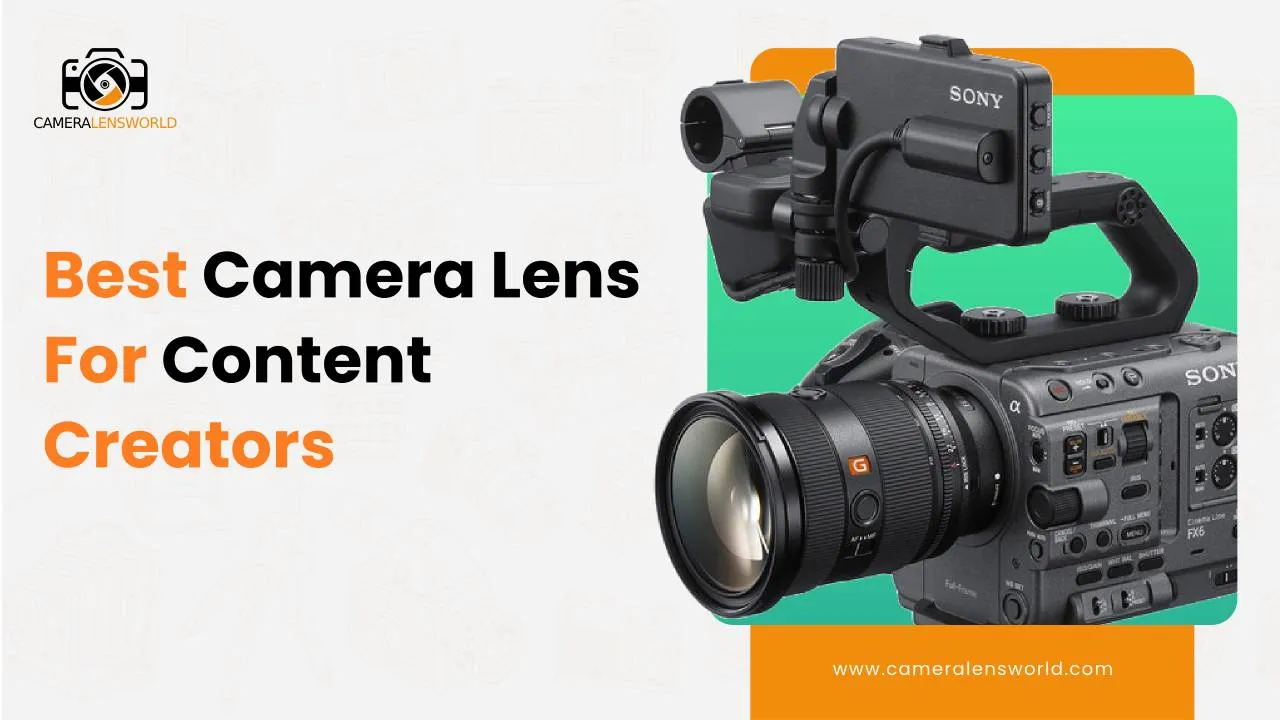
Are you a content creator eager to take your photography and videography to the next level? Wondering which camera lenses are ideal for achieving those captivating shots? As someone who has researched a lot, I have come up with the best camera lenses for content creators.
If you are a beginner, check out my previous article on a beginner’s guide for buying camera lenses.
In this article, I will let you explore the best camera lens for content creators who want to elevate their creative storytelling through stunning close-up imagery.
List Of Best camera lens for content creators [Quick review]
Here is a quick list of best camera lens for content creators.
- Sony E 16-50mm f/3.5-5.6
- Nikon Z DX 16-50mm f/3.5-6.3 VR
- Fujifilm XF 18-55mm f/2.8-4R LM OIS
- Olympus ED 14-42mm f/3.5-5.6
- Canon RF 24-105mm f/4-7.1 IS STM
- Sony 24-70mm f/2.8 G Master II
- Panasonic Leica Lumix 12-60mm f/2.8-4
- Rokinon 35mm Cine T1.5 Lens
- Sigma 18-35mm f/1.8 DC HSM L Lens
- Panasonic Lumix G Vario 7-14mm f/4 ASPH.
- Nikon AF-S DX 18-55mm f/3.5-5.6 G ED
List Of Best camera lens for content creators [Detailed Analysis]
Lets now have detailed analysis on best camera lens for content creators.
1- Sony E 16-50mm f/3.5-5.6
- The lens has a variable maximum aperture, ranging from f/3.5 at the wide end (16mm) to f/5.6 at the telephoto end (50mm).
- The minimum aperture setting for this lens varies depending on the focal length but generally ranges from f/22 to f/36.
- This lens is compact and lightweight and it’s often referred to as a “pancake” zoom lens because of its slim profile when retracted.
| Brand | Sony. |
| Type | Wide angle lens. |
| Lens format coverage | APS-C format. |
| Compatible Mounting | This lens was created specifically for Sony E-mount cameras. It is incompatible with A-mount cameras. |
| Maximum magnification | 0.215 x . |
| Image Stabilization | Has built-in Optical SteadyShot image stabilization. |
| No.of diaphragm blades | 7 blades. |
| Lens construction | 9 elements in 8 groups. |
| Minimum focus distance | 0.249 m. |
| Weight | 116 g. |
| Filter thread | 40.5 mm. |
| Dimension | 29.9 x 64.7 mm. |
| Adjustment | Lens has both auto and manual focus capabilities. |
| Durability | The lens has a retractable design that allows it to collapse to a compact size . |
| Chromatic Aberration | Lens has some chromatic aberration, but it is generally well-controlled at the center and at all focal lengths |
Reasons to buy:
- Compact size
- Affordable price
- Versatile zoom range
Reasons to avoid:
- Limited low-light performance
- Average image quality
2- Nikon Z DX 16-50mm f/3.5-6.3 VR
- This lens features a variable maximum aperture, ranging from f/3.5 at the wide end (16mm) to f/6.3 at the telephoto end (50mm).
- The minimum aperture setting for this lens varies depending on the focal length but generally ranges from f/22 to f/36.
- It is a compact and portable retractable zoom lens.
| Brand | Nikon. |
| Type | Wide angle lens. |
| Lens format coverage | DX format and APS-C size, |
| Compatible Mounting | Nikon Z. |
| Maximum magnification | 0.5x. |
| Image Stabilization | Has image stabilization. |
| No.of diaphragm blades | 7 blades. |
| Lens construction | 9 elements in 7 groups. |
| Minimum focus distance | 13.1 cm. |
| Weight | 395 g. |
| Filter size | 49 mm (front). |
| Dimension | 3.02 x 3.5″ / 76.6 x 88.8 mm. |
| Adjustment | Autofocus. It typically features a stepping motor for smooth and quiet autofocus, suitable for both photos and videos. |
| Durability | Compact and retractable lens. |
| Chromatic Aberration | May exhibit some chromatic aberration in certain shooting conditions. |
Reasons to buy:
- Vibration reduction (VR).
- Ultra-portable wide-angle zoom lens.
- Silent control ring.
Reasons to avoid:
- Variable aperture may limit low-light performance.
- Image quality is not the best, especially at the long end.
3- Fujifilm XF 18-55mm f/2.8-4R LM OIS
- The lens has a maximum aperture of f/2.8 at the wide end and f/4 at the telephoto end.
- It has a minimum aperture of f/22.
- Compact and lightweight with an all-metal construction.
- Focus range in normal: Approximately 0.6m (at full zoom). Wide-angle macro: 30 cm – 10 m; telephoto: 40 cm – 10 m
| Brand | Fujifilm. |
| Type | Zoom lens. |
| Lens format coverage | APS-C. |
| Compatible Mounting | Fujifilm X-Mount. |
| Maximum magnification | 0.15x. |
| Image Stabilization | Built-in Optical Image Stabilization (OIS). |
| No.of diaphragm blades | 7 blades. |
| Lens construction | 14 elements in 10 groups. |
| Minimum focus distance | 0.40 m. |
| Weight | 310 g. |
| Filter thread | 58 mm. |
| Dimension | 2.56 x 2.56 x 2.56 inches. |
| Adjustment | Autofocus and Manual Focus. |
| Durability | Metal contruction, lighweight. |
| Chromatic Aberration | Lens has well-controlled chromatic aberrations and lateral CA (color shadows at the image borders). |
Reasons to buy:
- Versatile zoom range.
- Wide aperture range (f/2.8-4) for creative control.
- Excellent image stabilization (OIS).
Reasons to avoid:
- Not as compact as some lenses.
- Limited telephoto reach.
4- Olympus ED 14-42mm f/3.5-5.6
- The lens has a variable maximum aperture, ranging from f/3.5 at the wide end (14mm) to f/5.6 at the telephoto end (42mm).
- It has a minimum aperture of f/22.
- This lens is known for its compact, lightweight design, which complements the portability of Micro Four Thirds camera systems whereas it’s designed to be small and retractable, making it easy to carry and store.
| Brand | Olympus. |
| Type | Wide angle lens. |
| Lens format coverage | Micro Four Thirds. |
| Compatible Mounting | Micro Four Thirds |
| Maximum magnification | 3x. |
| Image Stabilization | No built-in image stabilization. |
| No.of diaphragm blades | 7 blades. |
| Lens construction | 10 elements in 8 groups. |
| Minimum focus distance | 20.7 cm. |
| Weight | 150 g. |
| Filter thread | 37 mm. |
| Dimension | 43.5mm x 62 mm. |
| Adjustment | Autofocus. |
| Durability | lightweight portable for micro four thirds. |
| Chromatic Aberration | Chromatic aberration, at high-contrast edges in photos, may be present, especially at the extremes of the zoom range or when shooting at wide apertures. |
Reasons to buy:
- Compact and lightweight design.
- Versatile zoom range for everyday photography.
- Suitable for travel and casual shooting.
- Compatible with Olympus Micro Four Thirds cameras.
Reasons to avoid:
- Limited telephoto reach compared to some other options.
5- Canon RF 24-105mm f/4-7.1 IS STM
- This lens has a variable maximum aperture that ranges from f/4 at the wide end (24mm) to f/7.1 at the telephoto end (105mm).
- It has a minimum aperture of f/22.
- The lens is also very lightweight and compact, making it easy to carry around with you.
| Brand | Canon. |
| Type | Telephoto. |
| Lens format coverage | Full frame. |
| Compatible Mounting | Canon RF. |
| Maximum magnification | 0.4 x. |
| Image Stabilization | Optical stabilization upto 5 stops. |
| No.of diaphragm blades | 7 blades. |
| Lens construction | 13 elements in 11 groups. |
| Minimum focus distance | 0.66 ft in autofocus.
0.43 feet, when using Center Focus Macro. |
| Weight | 395 g. |
| Filter thread | 67 mm. |
| Dimension | 3.02 x 3.5″ / 76.6 x 88.8 mm. |
| Adjustment | Autofocus. |
| Durability | Lightweight and compact, easy to carry |
| Chromatic Aberration | At 24mm and 50mm, fringing is noticeable but not distractingly so, while by 70mm fringing drops right down to negligible levels and stays this way at 105mm |
Reasons to buy:
- Image stabilization (IS).
- Compact and lightweight.
- Affordable price for an RF lens.
Reasons to avoid:
- Limited aperture range compared to other lenses.
- Autofocusing becomes difficult in low-light conditions.
6- Sony 24-70mm f/2.8 G Master II
- This lens boasts a constant maximum aperture of f/2.8 throughout its entire zoom range.
- It has a a minimum aperture of f/22.
- The lens has an aperture ring, which allows you to manually select aperture via the ring with clicks (at one third stop detents), to declick the aperture for aperture racking, or to switch over into automatic mode to control aperture from within the camera.
| Brand | Sony. |
| Type | Standard zoom lens. |
| Lens format coverage | Full frame. |
| Compatible Mounting | Sony E. |
| Maximum magnification | 0.32 x. |
| Image Stabilization | No built-in image stabilization. |
| No.of diaphragm blades | 11 blades. |
| Lens construction | 20 elements in 15 groups. |
| Minimum focus distance | 0.21 – 0.3 m. |
| Weight | 695 g. |
| Filter thread | 82 mm. |
| Dimension | 88 mm x 120 mm. |
| Adjustment | Autofocus. |
| Durability | Has a full metal body and elegant focus and zoom rings. |
| Chromatic Aberration | Some fringing may be noticeable at the periphery on high contrast edges at the shorter focal length. |
Reasons to buy:
- Fast and Precise Autofocus.
- Professional-Grade Optics.
- Versatile Zoom Range.
Reasons to avoid:
- Price
- weigt and size.
7- Panasonic Leica Lumix 12-60mm f/2.8-4
- This lens offers a variable maximum aperture that ranges from f/2.8 at the wide end (12mm) to f/4 at the telephoto end (60mm).
- It has a minimum aperture of f/22.
- The lens is compatible with Micro Four Thirds cameras and has a Four Thirds format.
| Brand | Panasonic. |
| Type | Standard lens. |
| Lens format coverage | Micro Four Thirds. |
| Compatible Mounting | Olympus Panasonic Standard 4/3, Olympus Panasonic Micro 4/3. |
| Maximum magnification | 0.3x. |
| Image Stabilization | Built-in Optical Image Stabilization. |
| No.of diaphragm blades | 9 blades. |
| Lens construction | 14 elements in 12 groups. |
| Minimum focus distance | 0.20m. |
| Weight | 320 g. |
| Filter thread | 62 mm. |
| Dimension | N/A. |
| Adjustment | Autofocus. |
| Durability | The lens has a weather-sealed construction that is dust, splash, and freeze-proof. |
| Chromatic Aberration | Chromatic aberration is very well controlled. |
Reasons to buy:
- Wide aperture range (f/2.8-4) for creative control.
- High-quality Leica optics.
- Good image stabilization.
Reasons to avoid:
- Price may be relatively high compared to other Micro Four Thirds lenses.
- Not as compact as some other Micro Four Thirds zoom lenses.
8- Rokinon 35mm Cine T1.5 Lens
- This lens has a maximum aperture of T1.5.
- It has a minimum aperture of T22.
- The lens is lightweight, and has industry-standard gearing for focus and aperture rings.
| Brand | Rokinon. |
| Type | Wide angle lens. |
| Lens format coverage | Micro Four Thirds. |
| Compatible Mounting | Canon EF. |
| Maximum magnification | N/A. |
| Image Stabilization | Built-in Optical Image Stabilization. |
| No.of diaphragm blades | 8 blades. |
| Lens construction | 12 elements in 10 groups. |
| Minimum focus distance | 0.3 m. |
| Weight | 700 g. |
| Filter thread | 77 mm. |
| Dimension | 3.27 x 3.27″ / 83.1 x 83.1 mm. |
| Adjustment | Autofocus. |
| Durability | Lens has a full metal body and is designed for professional use |
| Chromatic Aberration | Lens has one high refractive index element and one aspherical element to reduce chromatic aberrations and distortion and produce greater sharpness. |
Reasons to buy:
- Wide aperture of T1.5.
- Geared focus and aperture rings for smooth and precise manual adjustments.
- Generally more affordable compared to others.
Reasons to avoid:
- Limited focal length versatility.
- May not have the same optical quality and sharpness.
9- Sigma 18-35mm f/1.8 DC HSM L Lens
- This lens boasts a constant maximum aperture of f/1.8 throughout its entire zoom range.
- It has a minimum aperture of T22.
- he lens is compact and lightweight, making it easy to carry around.
| Brand | Sigma. |
| Type | Wide angle lens. |
| Lens format coverage | APS-C format. |
| Compatible Mounting | Canon EF-S. |
| Maximum magnification | 0.23x. |
| Image Stabilization | Does not have built-in image stabilization. |
| No.of diaphragm blades | 9 blades. |
| Lens construction | 17 elements in 12 groups. |
| Minimum focus distance | 28 cm. |
| Weight | 810 g. |
| Filter thread | 72 mm. |
| Dimension | N/A. |
| Adjustment | AF motor featuring full time manual focusing. |
| Durability | The lens has a full metal body and a ribbed rubber zoom ring that grips well and lens has a weather-sealed construction that is dust and splash-proof |
| Chromatic Aberration | Lens has well-controlled chromatic aberrations. |
Reasons to buy:
- Impressive constant wide aperture.
- Versatile focal length range.
- Suitable for APS-C sensor cameras.
Reasons to avoid:
- Large and heavy.
10- Panasonic Lumix G Vario 7-14mm f/4 ASPH.
- This lens has a constant maximum aperture of f/4 throughout its entire zoom range.
- It has a minimum aperture of f/22.
- This lens is designed with a compact and lightweight form factor, making it well-suited for Micro Four Thirds camera systems.
| Brand | Panasonic. |
| Type | Fiaheye. |
| Lens format coverage | Micro Four Thirds. |
| Compatible Mounting | Micro Four Thirds. |
| Maximum magnification | 0.08x. |
| Image Stabilization | Lens does not have built-in image stabilization. |
| No.of diaphragm blades | 7 blades. |
| Lens construction | 16 elements in 12 groups. |
| Minimum focus distance | 0.25 m. |
| Weight | 300 g. |
| Filter thread | It lacks filter threads. |
| Dimension | 74 x 83mm. |
| Adjustment | Lens has a zoom ring and a manual focus ring for adjusting the focal length and focus, respectively. |
| Durability | Lens has a metal mount and a durable construction that is designed for professional use. |
| Chromatic Aberration | Lens has some chromatic aberration, but it is generally well-controlled. |
Reasons to buy:
- Constant aperture of f/4 for consistent exposure settings.
- Compact and lightweight design.
- Suitable for number of photography.
- Typically offers good image quality.
Reasons to avoid:
- May not be as sharp or optically advanced as some premium lenses.
- Price can be relatively high.
11- Nikon AF-S DX 18-55mm f/3.5-5.6 G ED
- The Nikon AF-S DX 18-55mm f/3.5-5.6 G ED lens has a variable aperture range of f/3.5-5.6.
- The minimum aperture is f/22-38.
- The lens has a full metal mount and the lens has a compact and lightweight design, making it ideal for travel and everyday use.
| Brand | Nikon. |
| Type | Standard. |
| Lens format coverage | DX-format. |
| Compatible Mounting | Nikon F (DX). |
| Maximum magnification | 0.31 x. |
| Image Stabilization | No image stabilization. |
| No.of diaphragm blades | 7 blades. |
| Lens construction | 7 elements in 5 groups. |
| Minimum focus distance | 0.28 m. |
| Weight | 210 g. |
| Filter thread | 52 mm. |
| Dimension | 75mm x 69mm. |
| Adjustment | High-speed autofocusing is accurate and silent thanks to the Silent Wave Motor (SWM). |
| Durability | Lens has a plastic body instead of metal, but it still uses Nikon’s Silent Wave Motor for quiet autofocus. |
| Chromatic Aberration | Some may found. |
Reasons to buy:
- Compact and lightweight design, making it portable and suitable for travel.
- Affordable price point.
- Versatile focal length range for general photography needs.
- Compatible with Nikon DX-format cameras.
- Good for beginners and those looking for a budget-friendly option.
Reasons to avoid:
- Basic build quality.
- Image quality may not be as sharp or advanced lenses.
What to look in a Best camera lens for content creators
1- Power zoom
When seeking a power zoom lens for content creation, prioritize lenses with motorized zoom functionality. Look for models that offer smooth, silent, and precise zoom control.
This feature enhances versatility and convenience, making it easier to capture dynamic shots and transitions, essential for content creators.
2- Maximum aperture
In the quest for the best camera lens for content creators, pay close attention to the maximum aperture. Opt for lenses with wider maximum apertures like f/1.4 or f/2.8.
These allow more light in, offering exceptional low-light performance and creative depth of field control for stunning content.
3- Focal range
When selecting the best camera lens for content creators, consider the focal range. Opt for versatile zoom lenses like 24-70mm or 18-55mm, as they cover a wide spectrum of shooting scenarios.
This flexibility ensures you can capture diverse content without frequently changing lenses, enhancing your creative capabilities.
4- Image stabilization
When evaluating the best camera lens for content creators, prioritize image stabilization (IS). Choose lenses with built-in IS technology, as it reduces the effects of camera shake, resulting in smoother, steadier footage and sharper images.
IS is crucial for content creators shooting handheld or in dynamic situations, ensuring professional-quality results.
Best camera lens for content creators FAQs
What Is the Best Camera for Vlogging?
The best camera for vlogging should offer high video quality (preferably 4K), reliable autofocus, effective stabilization, and low-light capabilities. Consider portability, lens compatibility, and budget to find the right fit for your vlogging style and needs.
What Focal Length is Best for Vlogging?
For vlogging, a focal length in the range of 16mm to 35mm (full-frame equivalent) is generally considered best. Wide-angle lenses in this range capture more of the scene and keep you in frame when holding the camera at arm’s length. However, the ideal focal length may vary based on personal preference and shooting style.
Do professional photographers use Nikon or Canon?
Professional photographers most frequently utilize Nikon cameras. Nikon is used by 31% of professionals, followed by Canon (28%) and Sony (20%). 6. The majority of amateur photographers use Canon cameras.
Conclusion
In conclusion, choosing the best camera lens for content creators is a critical decision that directly impacts the quality and versatility of your work. Prioritizing factors like maximum aperture, focal range, image stabilization, and lens type is essential to meet the unique demands of content creation.
Additionally, if you’re new to the world of camera lenses, don’t forget to explore our previous article, “Beginner’s Guide for Buying Camera Lenses,” for valuable insights into making informed lens choices as you embark on your content creation journey.
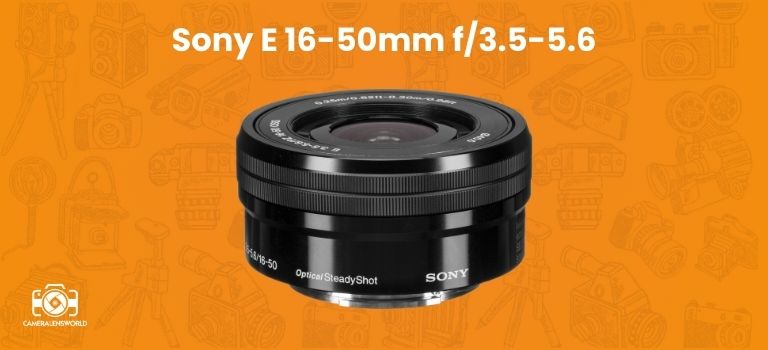
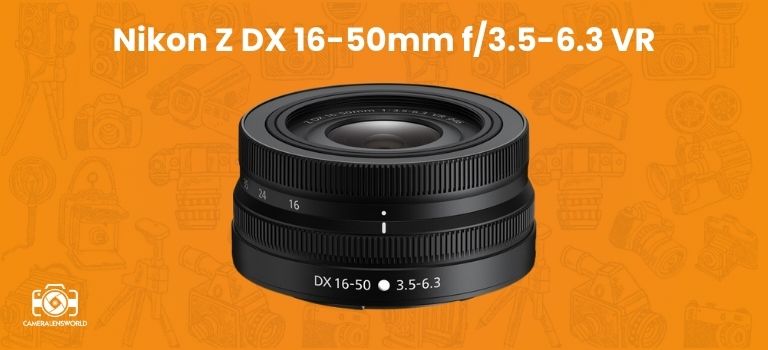
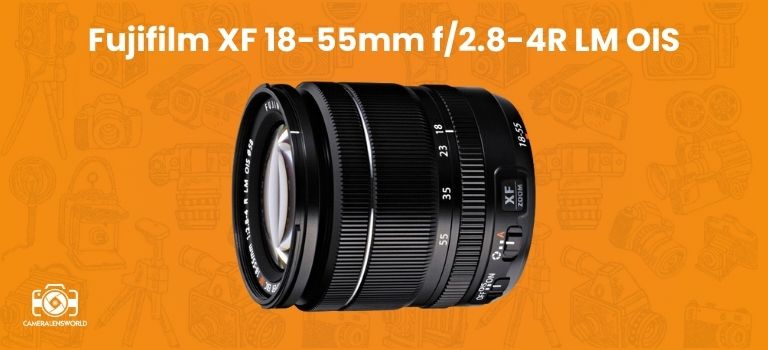
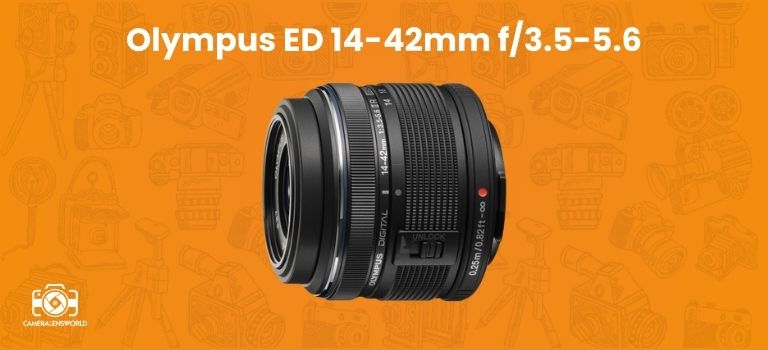

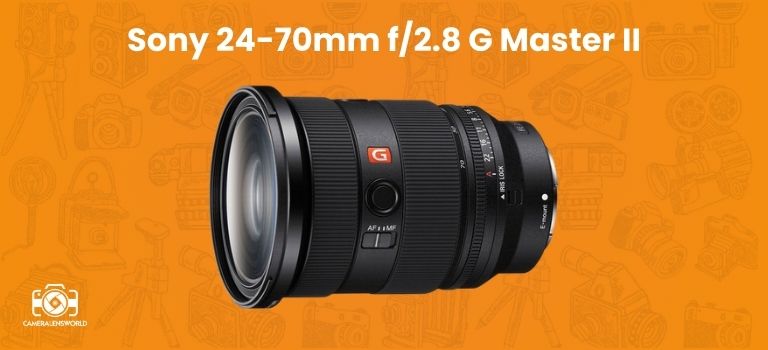
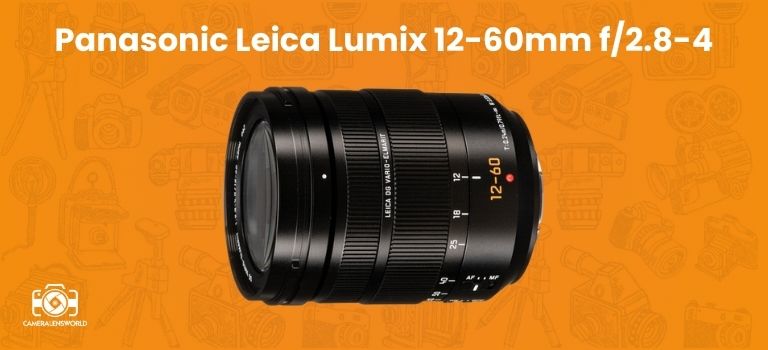

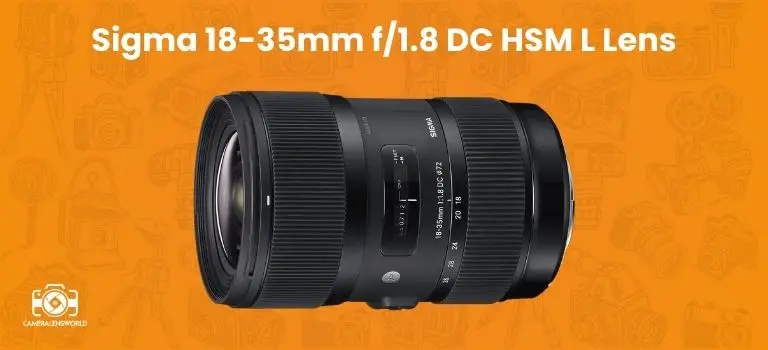
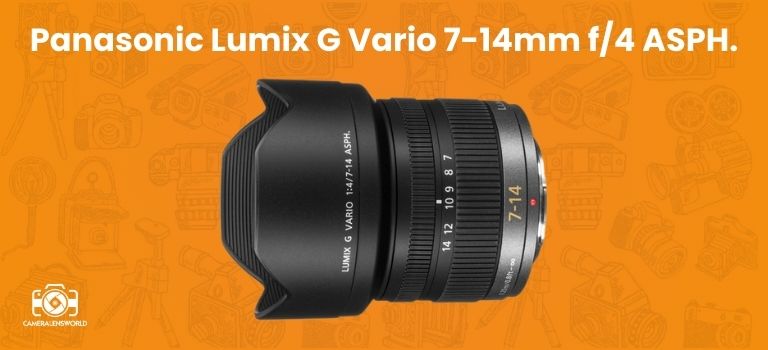
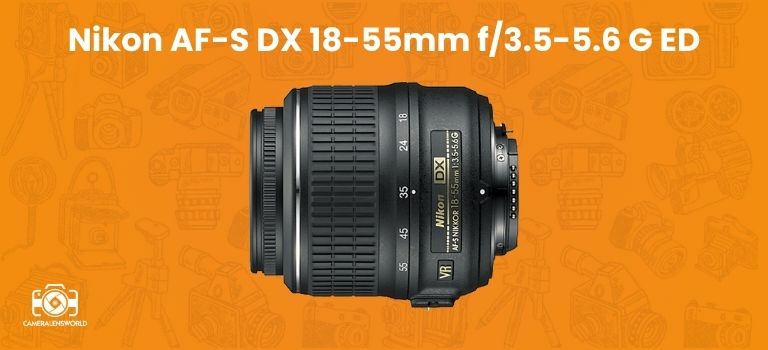

Leave a Reply
You must be logged in to post a comment.